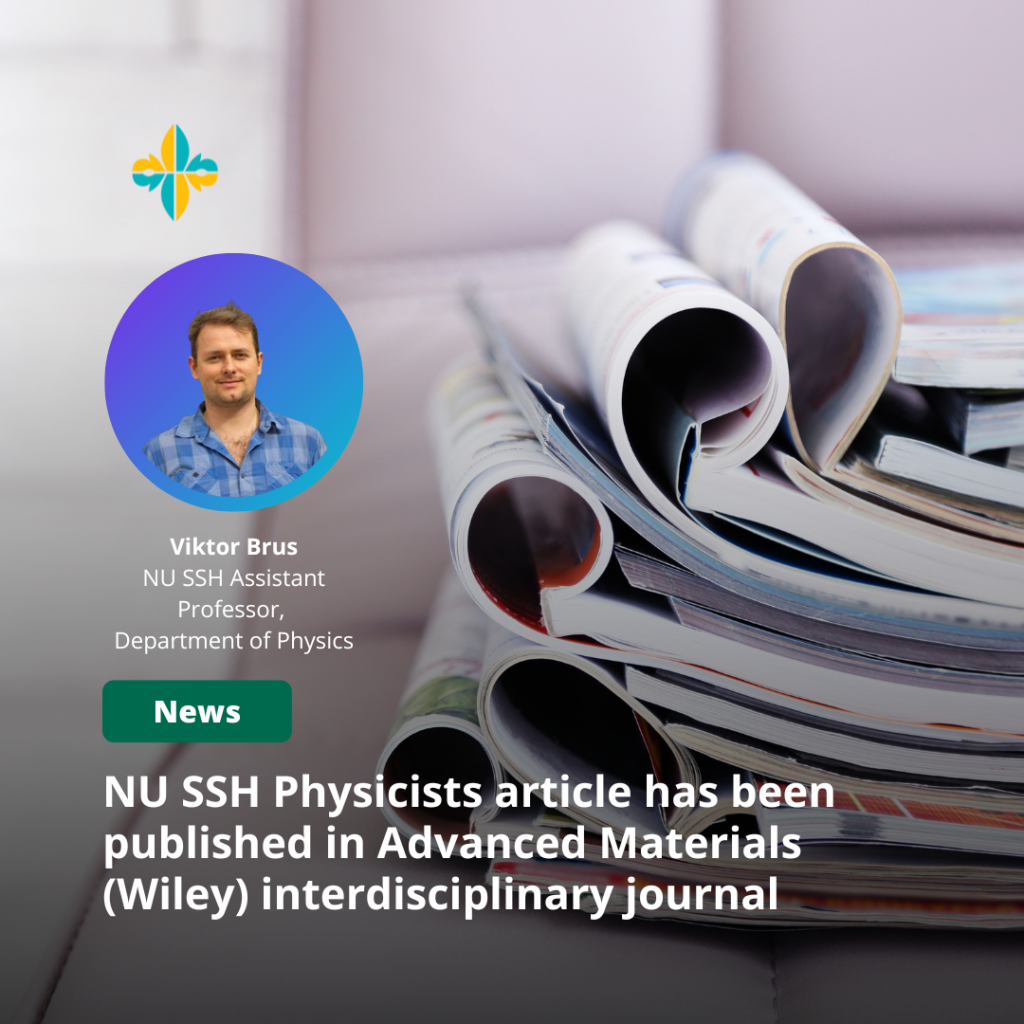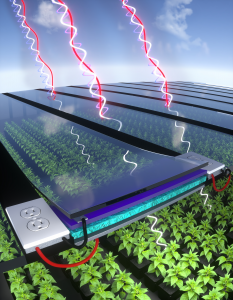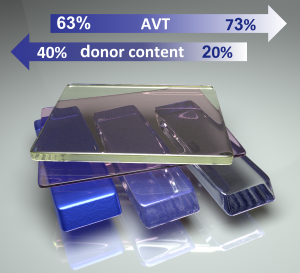NU SSH Physicists article has been published in Advanced Materials (Wiley) interdisciplinary journal

NU Physicists in Collaboration with International Colleagues Accomplished Better Understanding of Electronic Processes in Novel Semitransparent Organic Solar Cells.
Organic photovoltaics offer sustainable, solution-processable, and cost-effective integrated energy harvesting solutions (see Fig. 1). While opaque organic solar cells underwent enormous progress in the past decade, it remains a challenge to simultaneously high performance and transparency in the visible spectral range.

Fig. 1 A concept of selectively transparent organic solar cells integrated into a greenhouse.
Prof. Viktor Brus at Physics Department is working in the emerging field of semitransparent organic photovoltaics, trying to improve the efficiency of semitransparent organic solar cells via a detailed understanding of photoelectronic processes in these devices (https://vvbrus.wixsite.com/brusgroup). In the scope of this project, Prof. Brus coordinated an international research group comprising his PhD student Gulnur Akhtanova, enthusiastic colleagues from NU Core Facility Dr. Alexandr Arbuz and Nurgul Daniyeva, and prominent scientists from the University of California Santa Barbara (USA), Vidyasirimedhi Institute of Science and Technology (Thailand) and Pusan National University (Korea). The international team developed highly-transparent organic active layers based on a narrow-bandgap acceptor and wide-bandgap donor via the systematic dilution of the donor concentration from 40% to just 20% (see Fig. 2).

Fig. 2 A schematic representation of organic active layers with different average visible transmittance (AVT).
The investigation of advanced materials science and device physics in these structures yields quantitative insights into changes in the charge generation, recombination, and extraction dynamics upon the donor dilution, paving the way to next-generation integrated green energy solutions based on visibly transparent organic solar cells. The obtained results have been recently published in Advanced Materials (Wiley) – a prestigious top-tier interdisciplinary journal:
- Schopp, G. Akhtanova, P. Panoy, A. Arbuz, S. Chae, A. Yi, J. Kim, V. Promarak, T.-Q. Nguyen and V.V. Brus, Unraveling Device Physics of Dilute-Donor Narrow Band Gap Organic Solar Cells with Highly Transparent Active Layers, Advanced Materials (2022) in press. DOI: 10.1002/adma.202203796
- In August 2022 the article will appear in the “Rising Stars” special issue of Advanced Materials, highlighting outstanding Research Articles on studies conceptualized and supervised by recognized early career researchers from around the world upon invitation from the editorial team only. https://onlinelibrary.wiley.com/doi/toc/10.1002/(ISSN)1521-4095.Rising-Stars



